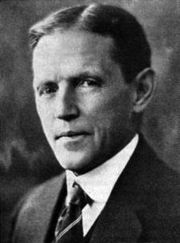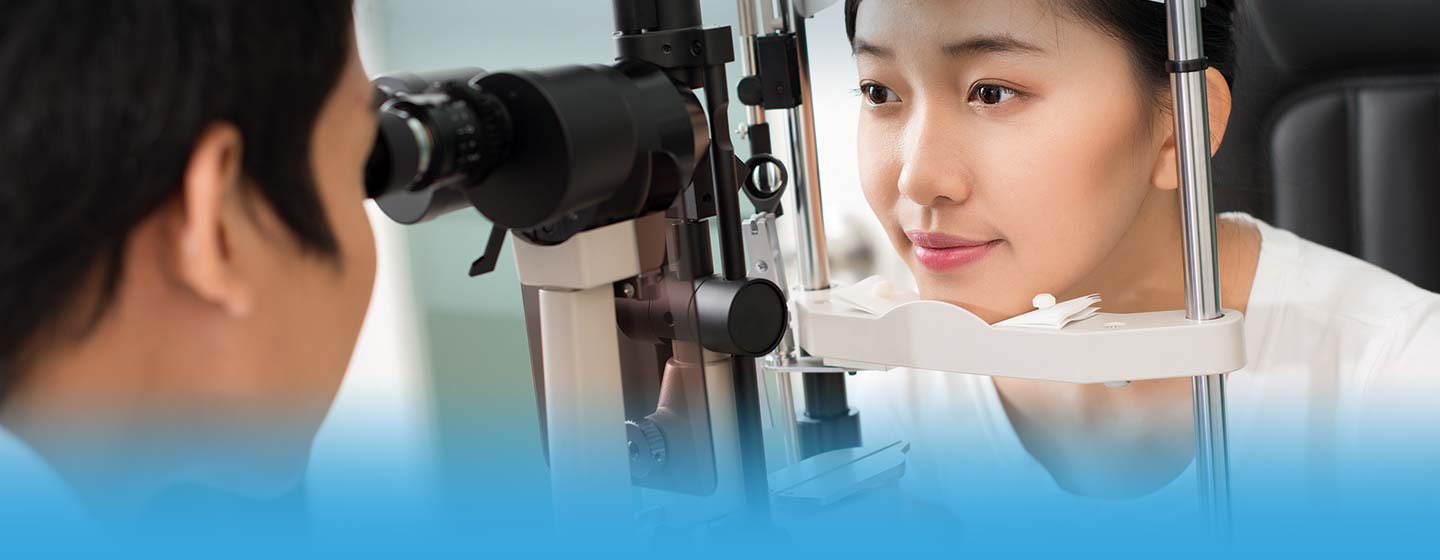
Doctor William Horatio Bates (1860 - 1930) – in his time, one of the best eye doctors of the renowned hospitals in New York; lecturer of ophthalmology; also the private medical practitioner. Spent his entire life on studying the functioning of the eyes and visual process.
In 1919, he published the book entitled The Bates Method for Better Eyesight Without Glasses in which he went so far that he disagreed with the generally accepted Helmholtz theory of vision (which in fact has prevailed until today). This theory is based on the thesis that the acute vision is conditioned by the small ciliary muscles located in the inside of the eye, which reputedly “control” the thickness of the lens. Helmholtz attributed them a main role in the process of accommodation. Doctor Bates came to the conclusion that the main accommodation tool is not the lens, but the external eyeball muscles responsible not only for the eyes movement, but also lengthening and shortening of the whole eye in its front-rear axle (in a similar way to the lens of the camera or binoculars). The experiments conducted by Bates proved that this theory was legitimate.
He explained the clear seeing of near objects by the work of the two (external) oblique muscles flattening (lengthening) the eyeball (just as when sitting on a ball), and the process of seeing clearly the distanced objects – by the work of four (external) rectus muscles pulling (“shortening”) the eye in the opposite direction. The Bates’ beliefs that the eye functions in this way (through the eyeball external muscles) are supported by the unexplained cases of clear seeing by the persons who have lost their lens due to this or that reason (for example, the cataract) or were born without it.
The thing that seems to be most characteristic for Bates is his approach to the patient and his/her disease. Bates would not ponder like almost all eye doctors on the optimal glasses for the patient. He rather thought how to really help the patient, that is, how to cure him/her from the defects so that the patient could see normally. The main assumptions of Bates theory are as follows:
- Recovery of good vision is possible
One of the main assumptions of Dr. Bates was the ascertainment that just as a broken limb can be brought back to normal functioning as a result of rehabilitation exercises and treatment, the organ of vision can be brought back to the full functioning in terms of acuity in the same way, not having to use the glasses.
- Abandoning artificial lenses and glasses
According to the assumptions of Dr. Bates, the artificial lenses and glasses are the same thing for the eyes as crutches for a person whose broken leg has knitted. If a person with the visual defect does not abandon the peculiar crutches for the eyes (the glasses) and take up rehabilitation treatment, that is reeducation and improvement of the organ of vision, he/she will not improve the vision, but quite the contrary, has to be prepared for the deterioration of vision and the use of even stronger glasses prescribed by the eye doctor.
- Acuity is variable
One of the assumptions of Dr. Bates was the thesis that the acuity varies from high to low and vice versa according to the physical and emotional state of a person. Bates found that the vision does not stay permanently at one level of quality but changes all the time.
- Reeducation of vision, that is, the abandonment of bad habits
Dr. Bates came to the conclusion that most visual defects are due to the incorrect use of the organ of vision. Bad habits related to the use of the eyes are always closely linked to their strain and stress. The stress affects the whole body in the same way. Dr. Bates found that with the adoption of good vision techniques (including especially the relaxation techniques), the stress in our eyes and the whole body is lower. Such was the effect of the adoption of methods of eyes and mind relaxation, which resulted directly in the improvement of sight and lower refraction error.
- Relax as the key to success
In Bates method, the ability of passive and dynamic relaxation is the first and basic technique improving the vision. By relaxation, I mean not only the general ability to relax the muscles, but also the relaxation of mind which is a condition for the process of vision to occur. In many cases, the relaxation techniques used by Bates turned out to be sufficient for the improvement of sight.
- The basic techniques used by Bates
I am going to limit myself to give only the names of the basic techniques used by Bates among his patients, which gave good unexpectedly good results in the treatment of visual defects. The techniques are specifically explained on this website in its appropriate sections. These are: the relaxation of body and eyes, palming, central fixation, light exposure, swinging, visualization, blinking, micromovement of the eyes, flash technique, analytic seeing and many others that we will try to discuss here.



